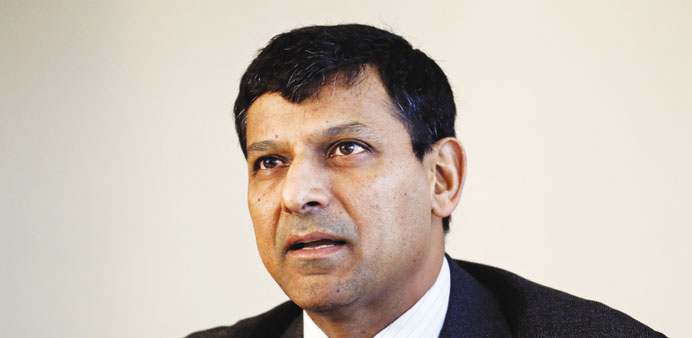Even as money floods into India, its central bank is bracing for the worst, building up currency reserves and drafting a game plan to protect the rupee against the sort of rout that alarmed policymakers and investors last year.
Reserve Bank of India governor Raghuram Rajan is reviewing its exchange rate policy, three officials with knowledge of the matter said, after the rupee’s drop to a record low in August spurred criticism that it was ill-prepared to manage a heavy sell-down by foreign investors.
The RBI is determined not to let that happen again, and is taking advantage of a rupee recovery on a flood of overseas money betting that opposition leader Narendra Modi’s Bharatiya Janata Party would sweep to power and set the stage for a revival in Asia’s third-largest economy.
The BJP scored a resounding victory in vote counting on Friday, knocking the Congress party out of power after a decade.
“In 2009, 2010, there was this great hands-off approach. But now we are thinking of reserve accretion,” said an official aware of the RBI’s approach.
“We need to prepare ourselves against any kind of storm that is going to come up,” he added.
The three officials declined to be identified because they were not authorised to speak with the news media.
While buying up dollars gives comfort against the prospect of a future sell-down, it can add to inflationary pressure by boosting rupee liquidity, and the RBI’s push to build reserves is tempered by its deep-seated wariness of inflation, the officials said.
A potential flood of rupees into banks as a result of RBI dollar-buying may thus force it to “sterilise” excess rupees, removing them from circulation by selling bonds, they said.
However, the key plank of its foreign exchange management plan is to buy dollars whenever possible to build reserves, with no specific target on how much it wants, the officials said.
“RBI has learnt its lessons. In the current situation where there are so many uncertainties like elections, global spillover, Fed fund rate hike, no amount of reserves is high,” one of the officials said. Traders say the RBI tends to buy dollars when the rupee strengthens above 60 per dollar. JP Morgan estimates that RBI purchases since February have totalled nearly $20bn, including $4.1bn in May.
As a result, India’s dollar reserves surged to $313.8bn as of May 9, the highest since November 2011, from a more than three-year low of $274.8bn in September, when the RBI defended the rupee aggressively by selling dollars, according to RBI data.
The RBI does not officially target a level for the rupee, but does step into the market to smooth volatility.
“The RBI maintains a foreign exchange reserve buffer that is commensurate with the needs of the Indian economy,” the central bank said in an emailed response to a query by Reuters.
Meanwhile, an RBI committee is reviewing measures rolled out last year to stabilise the rupee, according to one of the officials. Those steps included currency swap concessions for banks raising money from abroad and a special dollar window to state oil companies.
The measures, along with finance ministry steps such as curbing gold imports, were widely credited with stopping the rupee rout.
Rajan, who took office at the central bank on September 4, wants a list of options ready in the event that the rupee comes under pressure again, the person said.
Traders believe that in the event of another sell-down, the RBI would re-introduce curbs on trading on leverage. They also say it could take unprecedented steps such as intervening in non-deliverable forwards markets overseas through state banks.
The rupee has surged 18% since hitting a record low of 68.85 in August, far outperforming other emerging market currencies such as the Brazilian real and Indonesian rupiah.
The RBI is also wary of a sharp appreciation in the rupee, which might render the exchange rate less competitive for exporters, one of the officials said.

